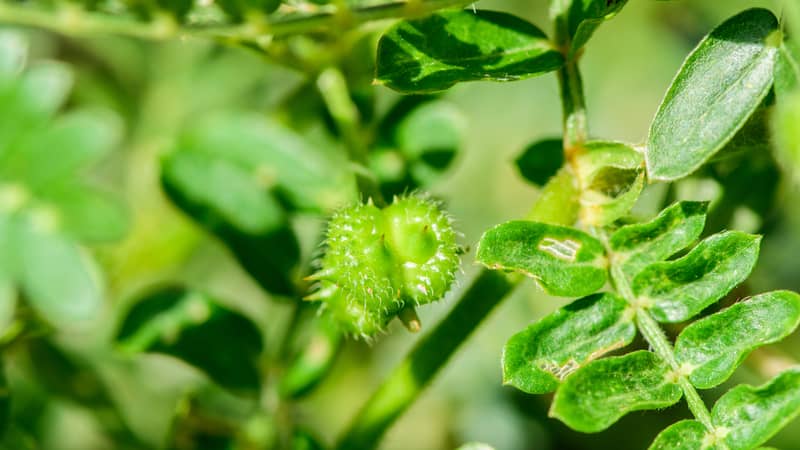A clean and well-manicured lawn is a sight to behold… and then you notice there’s a weed patch. Or two. Or six. Suddenly your pristine turf is overtaken by bindi growth, and your garden beds have bunches of weeds.
Don’t panic – it’s easy enough to get rid of them!
How to get rid of bindis? There are several ways to treat bindi-affected areas. These include:
- Hand removal
- Selective herbicide
- Iron sulphate
- Vinegar and salt
- Boiled water
Don’t let bindi overgrow your grass and ruin your lawn. Here’s how to deal with bindi weeds!
What are Bindi Weeds?
Bindis are broadleaf weeds, just like clover. Bindi is also called bindii, bindyi, or bindi-eye. It’s most distinctive for its prickly seed pod – a source of pain and annoyance for bare feet in the summer.
Soliva sessilis or bindi weeds have rosettes of leaves, greenish-yellow flowers, and prickly seed pods. The broadleaf weeds are native to South America, but have spread to different countries, including Australia.
Bindi Weed Growing Conditions
In winter to early spring, your lawn doesn’t grow as much, and the grass isn’t as lush and thick. Weeds find it easier to penetrate, so it’s better to let your lawn grow higher.
You should also aerate the soil so it’s not compacted. Use a garden fork or aerator to loosen the soil and let air reach the grass roots.
Bindi weed also takes over lawns that have poor soil nutrition. Don’t fertilise a lawn that has bindis, though – that’ll just encourage the growth.
How to Get Rid of Bindis
Bindi is a low-growing weed, meaning the seed heads and flowers remain well below mowing height. Since you can’t mow out bindi weed, here are some tricks to get rid of bindi on your lawn.
1. Hand removal
If there’s just a small patch, you can uproot the bindi weeds by hand. Use a garden weeding knife (wear gardening gloves!) or clover weeder and make sure you get all the roots. If any are left, the weeds will just regrow and you’ll need to deal with them all over again.
2. Selective weed killer
This is better for large areas of lawns. Selective herbicide takes its name because it kills weeds but not grass – so it’ll target bindi weeds without hurting the turf. Effective herbicides for bindi weed should contain bromoxynil and MCPA, or dicamba.
NOTE: If your lawn is sodded with buffalo grass, be careful of the herbicide you use. Bromoxynil is safe, but dicamba is not. Always check the container before applying.
3. Iron sulphate
Combine 2 tablespoons of iron sulphate with 4.5 litres of water. Spray the mixture onto affected areas and wait for the weeds to die off.
4. Vinegar and salt
To kill bindi naturally, you can spray a mixture of salt and white vinegar onto bindi-affected areas. Just make sure not to get it on other plants and grass, or you’ll kill those too!
5. Boiling water
You can also deal with bindi by pouring boiling water onto the weeds. However, only use this method if the area does not have other plants that could be damaged. The hot water will burn the bindi weed and kill it.
Ways to Keep Your Lawn Healthy
Bindi weed thrives in full sun and hot, dry conditions, as well as lawns with poor soil nutrition. To keep a healthy lawn and prevent weeds from growing, you’ll need to maintain it properly.
Use a balanced fertiliser to manage your soil’s nutrient profile.
Keep your lawn at a good height through mowing. A lawn mowing service can help you there!
Regularly remove weeds or use a pre-emergent herbicide to prevent their growth.
Water your lawn regularly – but not too much, or the soil will get soggy.
That’s how to get rid of bindis. This way, you can keep your lawn pristine and well cared-for… and you won’t hurt your feet in the summer!




